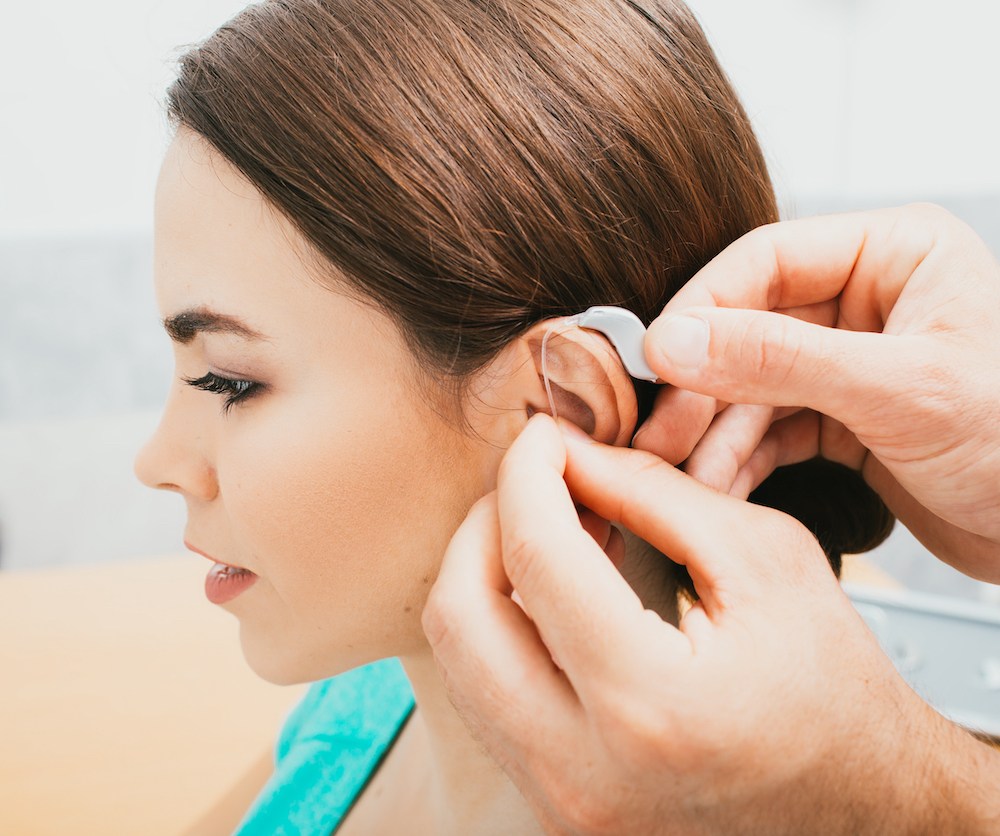The Role of Wearables in Monitoring Hearing Health
Keeping track of your hearing health is becoming easier and more effective
We Moved! Our new address is 12133 W Bell Rd, STE 201.

By: admin | October 30, 2024
Hearing loss can be a shock, no doubt about it. The world might seem a bit quieter, and conversations a bit harder to follow. But, there’s good news. You’re not alone. Many people have faced similar situations and found their way through it. The first steps after your diagnosis are key. These steps will help you regain control of your hearing health and continue living life on your terms. Better hearing starts with understanding your hearing loss and looking at the treatment options available to you from trusted professionals. Each step you take brings you closer to a more vibrant world of sound.
During the testing process, you can expect a comprehensive evaluation of your hearing abilities. The audiologist will start by taking a detailed medical history and discussing any concerns you may have about your hearing. After this initial conversation, several tests will likely be conducted to assess different aspects of your auditory function. The environment will be quiet and controlled, ensuring that external noise does not interfere with the results. Each test is designed to provide specific information about your hearing health, and your audiologist will explain each step of the process to ensure you feel comfortable and informed.
Here are four common hearing tests that could be conducted during your appointment:
Your hearing loss diagnosis might seem like trying to read a new language for the first time. It may seem complex and overwhelming at first, but with guidance and patience, it will start to make sense. There are different avenues your audiologist will explore, but the most common include what type of hearing loss you are dealing with, how severe this loss is and what pitches and frequencies are causing issues.
Type of hearing loss is a critical factor in understanding your hearing health. Hearing loss can be classified into three primary categories: conductive, sensorineural and mixed. Conductive hearing loss occurs when there are issues in the ear canal, eardrum or middle ear, preventing sound from being transmitted effectively. Common causes include ear infections, fluid buildup or earwax blockage. Sensorineural hearing loss involves problems within the inner ear or auditory nerve, often due to aging, noise exposure or genetic factors. Mixed hearing loss is a combination of both conductive and sensorineural types, indicating that multiple factors may contribute to the challenges you’re facing. Identifying the type of hearing loss is crucial as it informs the most appropriate treatment options and interventions.
Degree of hearing loss indicates the severity of your hearing impairment, which can vary widely among individuals. It is generally categorized into different levels: mild, moderate, severe and profound. Mild hearing loss may make it challenging to hear soft sounds or follow conversations in noisy environments, while moderate hearing loss can significantly impact everyday communication. Severe hearing loss often means that loud sounds may be heard, but normal conversations are difficult. Profound hearing loss indicates that a person may hear very little, if at all. Understanding the degree of your hearing loss is essential for your audiologist to tailor the most effective treatment plan and recommend appropriate hearing aids or assistive devices.
Configuration of hearing loss refers to the specific frequencies or pitches that are affected by your hearing impairment. Some individuals may experience high-frequency hearing loss, making it difficult to hear consonants or certain sounds, which can lead to challenges in speech comprehension. Others may have low-frequency hearing loss, affecting their ability to hear deeper sounds. There are also cases where individuals experience a sloping configuration, where hearing loss worsens with higher frequencies or a flat configuration, where all frequencies are affected equally. Understanding the configuration of your hearing loss allows your audiologist to recommend the most suitable hearing aids and ensure that they are programmed to address your unique auditory needs.
When it comes to hearing aids, there’s a lot to consider. The market is filled with various types and styles, each designed to cater to specific needs and preferences.
One common type is the behind-the-ear (BTE) hearing aid. This model sits comfortably behind your ear and delivers sound through a small tube connected to an earmold inside your ear canal. BTEs are versatile and suitable for most types of hearing loss.
In-the-ear (ITE) hearing aids, on the other hand, are custom made to fit directly in your ear canal. They’re less visible than BTE models and come in two styles: full shell (filling most of the outer ear) and half shell (filling only the lower part). Lastly, there are in-the-canal (ITC) and hearing aids which are even more discreet and provide a natural listening experience.
Choosing between these options depends on factors like your degree of hearing loss, lifestyle needs, cosmetic preferences, budget considerations and more. Your audiologist will help guide you through this process to find the best match for you. Each type has its pros and cons – what matters most is finding a solution that fits seamlessly into your life.
Hearing loss isn’t just about the physical changes. It can also have emotional consequences, making it more than a simple medical condition. Feelings of frustration, embarrassment and even sadness are not uncommon when dealing with hearing loss.
These feelings can be overwhelming at times, but remember that you’re not alone. There are several coping strategies that can help you manage these emotions:
Failing to address hearing loss can lead to a range of negative consequences that affect not only your auditory health but also your overall well-being. One of the most significant impacts is on communication. Difficulty hearing can strain conversations, making social interactions challenging and frustrating. This can lead to feelings of isolation and frustration as you may withdraw from social activities to avoid the embarrassment of misunderstanding or mishearing others. Over time, this isolation can contribute to mental health issues, such as anxiety and depression.
Additionally, untreated hearing loss can have cognitive effects. Research suggests that there is a strong link between hearing loss and cognitive decline. The brain relies on auditory input to process information and stay engaged with the environment. When hearing loss is present, the brain may divert resources to try to understand sounds, which can lead to cognitive overload and fatigue. This may ultimately contribute to a decline in memory and cognitive function, increasing the risk of conditions like dementia.
Physical health can also be impacted if hearing loss goes unaddressed. People with untreated hearing loss may be at a higher risk for falls and accidents due to difficulty hearing warnings or cues in their surroundings. They may experience an overall decline in quality of life, as they miss out on vital auditory experiences, like enjoying music, engaging in conversations or hearing loved ones’ voices clearly. By proactively addressing hearing loss, you can maintain your social connections, support your cognitive health and enhance your overall quality of life.
Opening up about your hearing loss to those around you is a significant step in managing your hearing loss. It helps create an environment of understanding and patience, which is vital for effective communication.
When explaining your hearing loss, keep it simple and straightforward. Describe how it affects your ability to hear certain sounds or follow conversations. This clarity will help others understand your situation better and adjust their communication methods accordingly.
Just like regular dental or eye exams, routine hearing check-ups are vital for maintaining optimal hearing health. These check-ups allow you to stay on top of any changes in your hearing and take proactive steps towards managing your hearing loss.
One challenge you might face is forgetting or delaying these appointments due to a busy schedule. A great solution is setting reminders on your phone or marking the dates on a physical calendar. This way, you’ll always remember when it’s time for your next visit to the audiologist. Regular check-ups not only ensure that your hearing aids are functioning properly but also help in detecting any potential issues early, leading to more effective treatment options.
Protecting the hearing you still have is vital in managing your hearing loss. It’s like a shield, helping you to fend off further deterioration. Small changes in your daily routine can make a significant difference over time.
Noise exposure is one of the main culprits behind progressive hearing loss. Limiting your exposure to loud sounds is therefore essential. This can be as simple as turning down the volume on your music devices or wearing ear protection when attending loud events.
Another important tip is to maintain a healthy lifestyle. Regular exercise and a balanced diet can contribute positively to your overall health, including your hearing health. Every step you take towards protecting your remaining hearing counts!
Healthy hearing is important not only to your overall wellness, but to how you connect with the world around you. At Grusecki Audiology & Hearing Aid Services, our experts are well-versed in the diagnosis and treatment process of hearing loss. We will walk you through each step and ensure you understand our recommendations and the desired outcomes.
Feel free to reach out for more information or to schedule a consultation at our Surprise, AZ location by calling (623) 583-1737. Your questions and concerns are important to us, and we’re here to provide the support you need as you explore the available treatment options tailored specifically for your needs.
Tags: hearing loss and mental health, hearing loss symptoms, types of hearing loss

Keeping track of your hearing health is becoming easier and more effective
By: admin | October 20, 2025

Getting a hearing test or being told you need hearing aids can feel
By: admin | July 29, 2025

Technology has changed how we work, communicate and access entertainment
By: admin | June 20, 2025